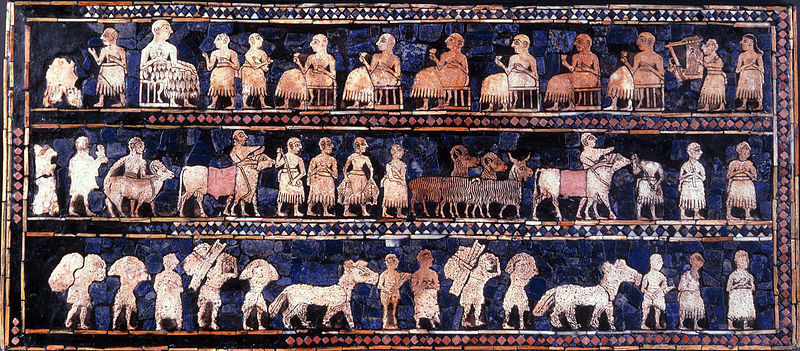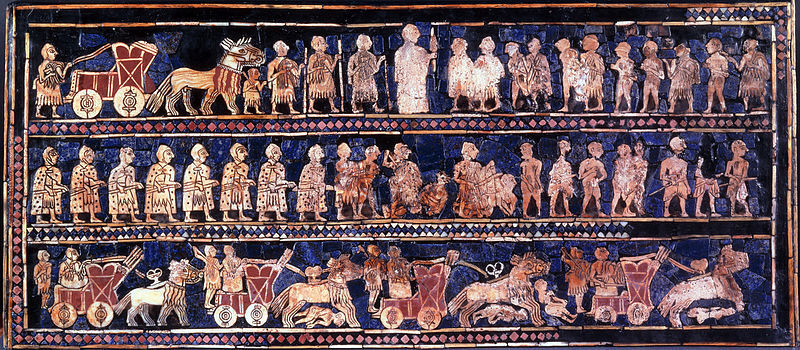The concepts covered in this fact sheet go beyond those seen in secondary school. It is intended as a supplement for those who are curious to learn more.
The city-states of the Fertile Crescent are politically independent from one another. They acted autonomously and had the same powers as a modern-day state. In Antiquity, many city-states were founded and developed in Mesopotamia. Babylon and Ur are eloquent examples.
Babylon was a Mesopotamian city-state situated between the Tigris River and the Euphrates River, some 100 kilometres from modern-day Baghdad. It was the capital of the Babylonian Empire until its fall in 539 B.C. There were two Babylonian empires separated by Assyrian rule (between 1300 and 612 B.C.):
- First Babylonian Empire (1793 to 1300 B.C.);
- Second Babylonian Empire (612 to 539 B.C.).
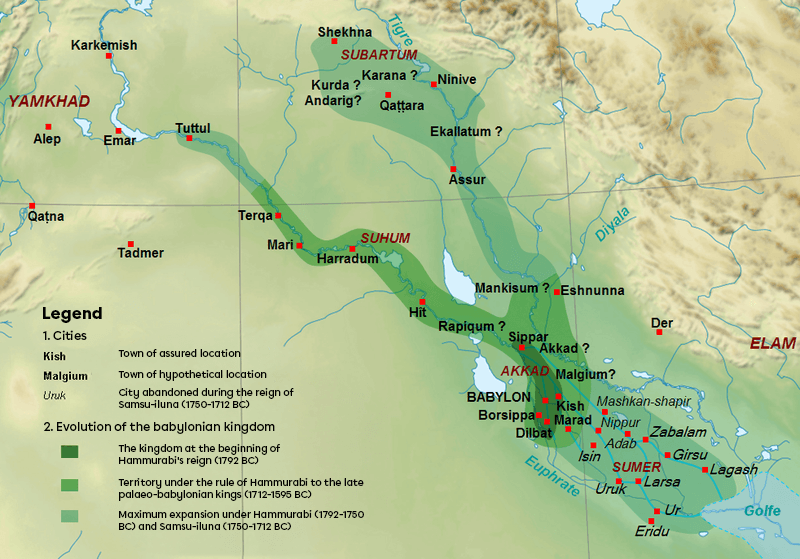
Evolution of the Babylonian Empire
The city of Babylon is an imposing capital inhabited by more than 80,000 people. It contains a number of monuments that impress visitors, including the Hanging Gardens, the Ishtar Gate and the many zigurats (such as the Tower of Babel). The Ishtar Gate is the main point of entry to the 18-kilometre-long walls of Babylon. It was built by King Nebuchadnezzar II, King of Babylon between 605 and 562 B.C.
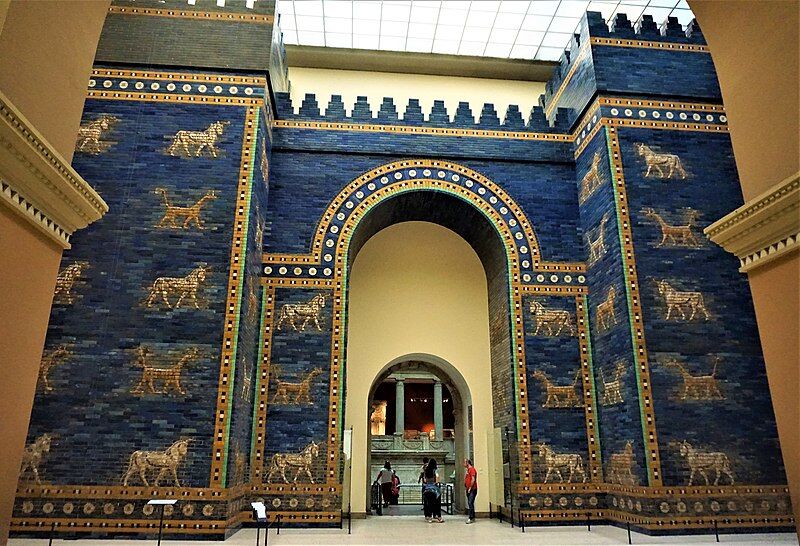
Ur was a Sumerian city-state founded at the end of the 4th millennium B.C. It was built on the ancient mouth of the Euphrates River, near the present-day Iraqi city of Basra. Several buildings have been discovered there, as well as numerous cuneiform tablets. Ur was an important religious centre of the Sumerian Empire.
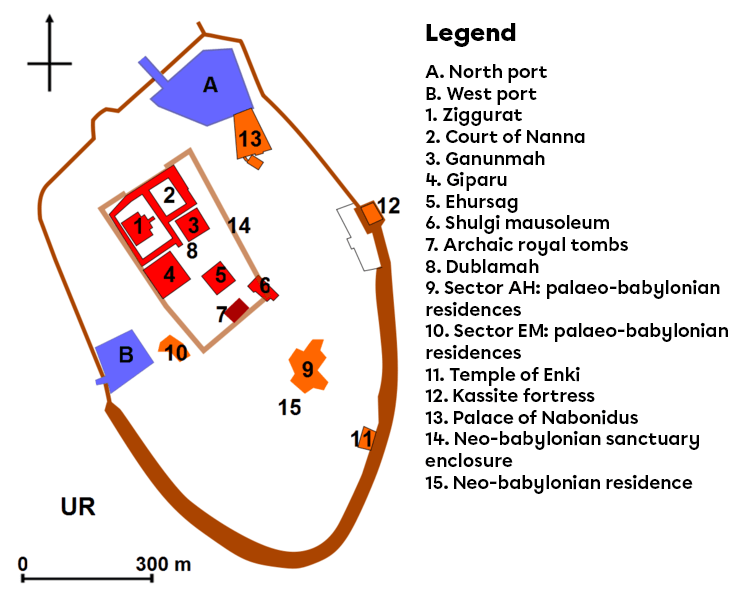
Map of the city around 2000 B.C.
The Ur zigurats is one of the best-known buildings in the city of Ur. It was built around 2100 B.C. and was a four-storey temple. Several other ziggurats were built in other Sumerian city-states, such as Uruk and Nippur.
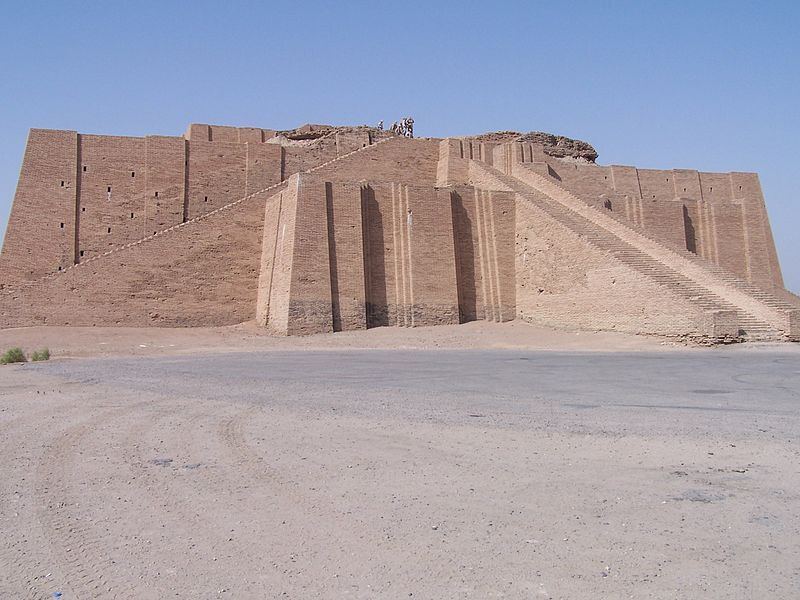
Ruins of the Ur zigurats.
Like other Mesopotamian city-states, Ur was ruled by a king. The king was often depicted in works of art, and his military victories were celebrated. This is particularly true of the Standard of Ur, a wooden chest covered with shells and coloured stones. It was found inside a burial complex in Ur in the 1920s. The artefact is rectangular in shape, like a box. Of its four sides, two are more important (the large sides). One is called the ‘War side’ and the other the ‘Peace side’.
The ‘War side’ shows a Sumerian army, while the ‘Peace side’ shows a celebration, a banquet. The king is easily recognisable, being taller than the other figures.
